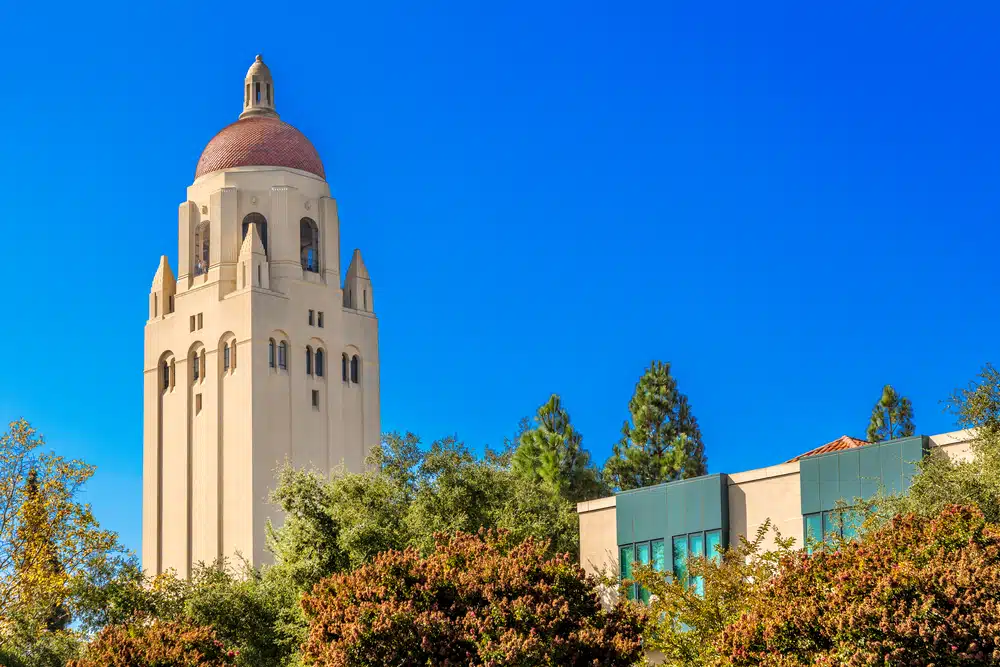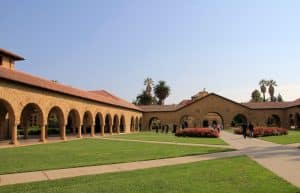How Will Stanford’s Yield Rate Affect Your Admission Chances?
As prospective students, determining your chances of admission into Stanford University requires a comprehensive understanding of not only the acceptance rate but also the yield rate, a crucial yet often overlooked factor in the admission process. In this article, we delve deep into Stanford’s yield rate, its implications on admission chances, and strategic approaches to improve your chances of being admitted into this prestigious institution.
Understanding Stanford’s Yield Rate
Before we start analyzing its impact on your admission chances, it is essential to define the yield rate and understand its significance in the college admission process. The yield rate, known as the enrollment rate in some circles, is a fundamental parameter in higher education admission statistics.
When it comes to college admissions, the yield rate is a crucial metric that provides valuable insights into the preferences and choices of admitted students. It represents the percentage of admitted students who ultimately choose to enroll in a particular university or college. In other words, it is the ratio of the number of students who accept an offer of admission to the number of total offers sent out by a school.
Yield rate represents the percentage of admitted students who ultimately choose to enroll in a particular university or college. In other words, it is the ratio of the number of students who accept an offer of admission to the number of total offers sent out by a school.
For instance, let’s take Stanford University as an example. If Stanford offers admission to 100 students and 68 of those students enroll, Stanford’s yield rate would be 68%. However, it’s important to note that yield rates can vary dramatically from one educational institution to another.
Yield rate is a critical factor for universities and colleges as it helps them gauge the level of interest and desirability of their institution among prospective students. It reflects the effectiveness of their recruitment strategies, the strength of their academic programs, and the overall appeal of their campus and student life.
The Significance of Yield Rate in College Admissions
The yield rate reflects a university’s attractiveness to students and provides insight into how many students a university would need to admit to fill its class. A higher yield rate indicates a greater level of student interest in attending that institution. Schools often take pride in having a high yield rate, as it indicates the institution’s preferability among its admitted students.
Furthermore, yield rates play a significant role in university rankings as they are used as a measure of a school’s prestige and desirability. Institutions with higher yield rates are often seen as more competitive and prestigious, attracting top-tier students from around the world.
It’s important to note that a high yield rate doesn’t necessarily mean a university is better than one with a lower yield rate. Different universities have different enrollment goals and target student populations. Some universities may intentionally maintain a lower yield rate to ensure diversity and accommodate a larger number of admitted students.
Moreover, yield rates can also be influenced by external factors such as financial aid packages, location, reputation, and the overall competitiveness of the admission process. Students may choose to enroll in a university based on various personal and academic considerations.
The Impact of Yield Rate on Stanford’s Admissions
Having gained a basic understanding of yield rate, let’s proceed to discuss its impact on Stanford’s admission process.
The yield rate, also known as the enrollment rate, is a crucial factor in the admissions process at Stanford University. It refers to the percentage of admitted students who choose to enroll at the university. A high yield rate means that Stanford can maintain its selectivity, accepting a smaller number of applicants while still ensuring that it reaches its enrollment goals. On the other hand, a lower yield rate might cause an institution to widen its acceptance rate to ensure a sufficient number of matriculations.
Stanford’s high yield rate has a direct impact on its exceptionally competitive acceptance rate. This implies that students applying to Stanford face stiff competition for limited slots, partly due to the high yield rate among admitted students. With a high yield rate, Stanford can maintain its reputation as a prestigious institution with a highly selective admissions process.
How Yield Rate Influences Admission Decisions
When reviewing applications, the admissions committee at Stanford takes the yield rate into consideration. They understand that a high yield rate indicates strong interest and commitment from admitted students. Therefore, they are more likely to accept applicants who demonstrate a genuine desire to attend Stanford and are likely to enroll if admitted.
Furthermore, a high yield rate allows Stanford to shape a diverse and talented student body. The university can be more selective in choosing students who not only have impressive academic achievements but also contribute to the campus community through their extracurricular involvements, unique perspectives, and personal qualities.
Stanford’s Unique Approach to Yield Rate
Stanford has always adopted a unique approach to managing its yield rate. As one of the most prestigious universities in the world, Stanford’s appeal among high school graduates has consistently resulted in high yield rates. The university’s reputation for academic excellence, cutting-edge research opportunities, and vibrant campus life attracts a large pool of highly qualified applicants.
In addition to its strong reputation, Stanford employs strategies such as restrictive early action policies to regulate the number of simultaneous applications an early applicant can submit. This strategy promotes committed applicants and, in return, amplifies the yield rate. By limiting the number of early applications, Stanford ensures that students who apply early have a genuine interest in attending the university.
Moreover, Stanford’s commitment to financial aid plays a significant role in influencing the yield rate. The university’s generous financial aid packages make it more affordable for admitted students to attend. This, in turn, increases the likelihood of students accepting their offers of admission and enrolling at Stanford.
Overall, yield rate is a critical factor in Stanford’s admissions process. The university’s high yield rate allows it to maintain its selectivity and reputation while shaping a diverse and talented student body. Through unique strategies and a commitment to financial aid, Stanford continues to attract highly qualified applicants who are eager to contribute to the university’s vibrant community.
Strategies to Improve Your Admission Chances
Given the impact of yield rate on Stanford’s admission decisions, it is advisable to devise strategies to secure a competitive edge.
When it comes to gaining admission to highly selective institutions like Stanford, having a strong application profile is crucial. It goes beyond just having impressive academic merits, extracurricular activities, and recommendation letters. Stanford is looking for candidates who not only excel academically but also have the potential to contribute to their community. Therefore, it is important to demonstrate your personal growth and your ability to make a positive impact on the Stanford community.
One way to set yourself apart from other qualified applicants is to diversify your competencies. Stanford values candidates who have a wide range of skills and interests. So, consider participating in different activities and pursuing various passions. This will not only make your application more well-rounded but also showcase your ability to adapt and thrive in different environments.
Enhancing Your Application Profile
A strong application profile is a cornerstone in gaining admission to highly selective institutions like Stanford. Alongside your academic merits, extracurricular activities, and recommendation letters, demonstrating your personal growth and potential to contribute to the Stanford community can set you apart from other qualified applicants.
Remember, Stanford is on the lookout for candidates who will not only thrive in their academics but will also become constructive elements in their community; diversifying your competencies is paramount.
Furthermore, it is important to showcase your leadership skills. Stanford values candidates who can take initiative and make a difference. Whether it’s through leading a club or organization, organizing community service projects, or taking on leadership roles in your school or community, demonstrating your ability to inspire and motivate others will greatly enhance your application.
Demonstrating Interest in Stanford
Owing to Stanford’s high yield rate, demonstrating authentic interest in the university can be valuable. Participate in Stanford’s informational events, connect with current students and faculty, and reflect on how Stanford aligns with your academic and career aspirations in your application essay.
Convey your strong, credible reasons for wishing to join Stanford’s community, making it clear how you could contribute and why Stanford is your top choice.
In addition to demonstrating interest, it is also important to showcase your knowledge about Stanford. Take the time to research the university thoroughly and familiarize yourself with its programs, faculty, and campus culture. This will not only help you in writing a compelling application essay but also allow you to have meaningful conversations during interviews or campus visits.
Lastly, don’t be afraid to reach out to Stanford alumni or current students. They can provide valuable insights and advice on the application process and give you a better understanding of what Stanford is looking for in its students. Building connections and demonstrating genuine enthusiasm for Stanford will leave a lasting impression on the admissions committee.
Predicting Future Yield Rates and Their Implications
So, what could Stanford’s future yield rates look like, and how might they influence your admission chances?
When considering the future yield rates of Stanford University, it is important to take into account several factors that contribute to fluctuations in these rates. One significant factor is the changes in tuition fees. As tuition fees rise, it may become more challenging for some students to afford to attend Stanford, potentially leading to a decrease in the yield rate. On the other hand, if the university offers more generous financial aid packages, it could attract a larger pool of applicants and maintain a high yield rate.
Another factor that affects yield rates is the university’s prestige. Stanford’s reputation as one of the world’s leading institutions of higher education plays a crucial role in attracting top talents. The allure of studying at a prestigious university like Stanford can significantly impact the yield rate, as many students aspire to be part of such an esteemed academic community.
The overall state of the economy also plays a role in yield rate fluctuations. During economic downturns, students and their families may face financial constraints, making it more difficult to commit to attending a university with high tuition fees. Conversely, during periods of economic prosperity, more students may be able to afford to attend Stanford, leading to an increase in the yield rate.
It is worth noting that unexpected circumstances, such as global pandemics, can have a profound impact on yield rates. The COVID-19 pandemic, for example, disrupted the traditional college admissions process, causing uncertainty and affecting students’ decisions. The shift to remote learning and the cancellation of in-person campus visits may have influenced the yield rate for Stanford and other universities.
Despite these variables, Stanford University’s unmatched reputation, its robust financial aid packages, and its history of academic excellence make it resilient to drastic fluctuations in its yield rate. The university’s commitment to providing a world-class education and fostering a vibrant intellectual community continues to attract a diverse pool of talented applicants.
Projecting Stanford’s Future Yield Rates
While it is impossible to accurately predict Stanford’s future yield rates, it is reasonable to expect that the rate will remain high. The combination of Stanford’s prestige, the exceptional quality of education it offers, and its commitment to providing substantial financial aid programs positions the university to continue attracting top talents from around the world.
As a prospective student, it is essential to remain informed about these factors that can influence Stanford’s yield rates. Understanding the dynamics that impact yield rates can help you develop a strategic approach when applying to Stanford. By considering the university’s financial aid offerings, its reputation, and the state of the economy, you can make informed decisions that enhance your chances of admission.
The Role of Yield Rate in Other Top Universities
Finally, let’s explore the yield rates in other prestigious universities and how they compare with Stanford.
Comparing Stanford’s Yield Rate with Other Institutions
Stanford’s yield rate consistently ranks among the top in the nation, alongside other highly competitive schools like Harvard, MIT, and Yale. Its high yield rate reflects favorably on the university’s prestige, contributing to its attractive power of top global talents.
However, Stanford’s rate might fluctuate differently compared to other institutions due to its unique policies, reputation, and the breadth and depth of academic programs it offers.
How Other Universities Manage Yield Rate
Other top-ranking universities employ varying strategies to manage their yield rates. Harvard and Yale, for instance, use single-choice early action policies similar to Stanford. In contrast, others, like the University of Chicago, use early decision programs which, once students have accepted, they are bound to attend, thereby significantly increasing the yield rate.
Thus, understanding how different universities manage their yield rates could be helpful when comparing and deciding where to submit your college applications.
Final Thoughts
While the yield rate is not the only determinant in Stanford’s admission process, understanding its influence could give you a significant edge. Coupled with a robust application, thoughtful school choice, and active demonstration of interest, understanding how yield rates work could lead to your next steps in becoming part of the Stanford community.
How AdmissionSight Can Help You With College Admissions
AdmissionSight is a college consulting firm that provides personalized assistance to students throughout the college admissions process. Here are some ways that AdmissionSight can help you:
Admissions strategy: AdmissionSight can help you develop a strategic plan for your college application process. Our professional consultants can assist with identifying schools that are a good fit for your academic, extracurricular, and personal goals and help you plan and prioritize your application strategy.
Application review: AdmissionSight can review your application and provide feedback on how to improve it. We can offer suggestions on making your application stand out and highlighting your strengths and unique qualities.
Essay coaching: AdmissionSight can help you craft compelling essays that showcase your personality, goals, and achievements. We can guide you through the essay writing process and provide feedback on your drafts to help you refine your writing.
Interview preparation: AdmissionSight can provide interview coaching to help you feel confident and prepared for college interviews. Our experts can offer tips on how to present yourself professionally and how to answer common interview questions.
Extracurricular planning: AdmissionSight can help you plan and develop your extracurricular activities to make them more impactful and meaningful. We can suggest activities that align with your interests and goals and provide guidance on demonstrating your leadership and initiative.
Overall, AdmissionSight can provide valuable guidance and support throughout the college admissions process to help you maximize your chances of getting accepted into the college of your choice.
With a high success rate of over 75%, we have built a strong network in the past decade. Book an initial consultation today, free of charge!










































